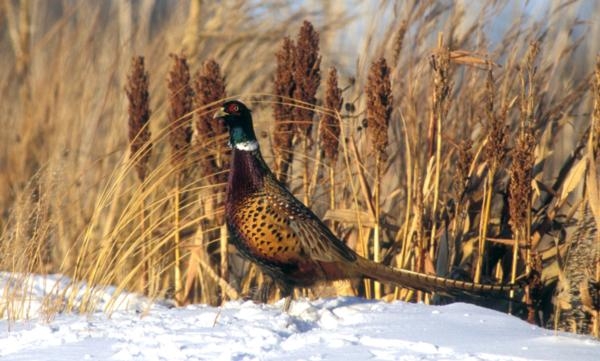Feeding Wild Pheasants During a Harsh Winter

FEEDING WILD PHEASANTS DURING ROUGH WINTER
Our “Harsh winter is bringing on questions about feeding wild pheasants. Remember that habitat is the effective long-term solution! The key to carrying pheasants through the winter is quality thermal habitat. While this may provide no consolation this winter, consider that resources spent on establishing high-quality winter cover will yield far greater results and the best winter survival rates down the road. The lesson to be learned from a tough winter is the need to plant more high quality thermal cover this spring.
Start your thermal habitat planning - shelter belts, wetland (think cattails) restorations and food & cover plots - now! “More than anything, feeding is reactionary to the winter, when the best thing we can do is be proactive about improving quality habitat,” says Rick Young, Pheasants Forever's Vice President of Field Operations. “Unfortunately, many well-intentioned people who provide corn and other grains as food sources actually harm pheasants more than they help them.” Why NOT to Feed Pheasants: The biggest reason to shy away from feeding pheasants is that feeders attract predators and expose pheasants to death by predation. Feeders give predators a focus point similar to a bait pile. In fact, it is rare for a pheasant to starve, but death by freezing can be common.
Poorly-placed feeders may draw the pheasants out and away from their protective winter cover and cause birds to congregate and expend energy competing for food. Instead of saving birds, this actually adds to freezing deaths.
Posted in: News

